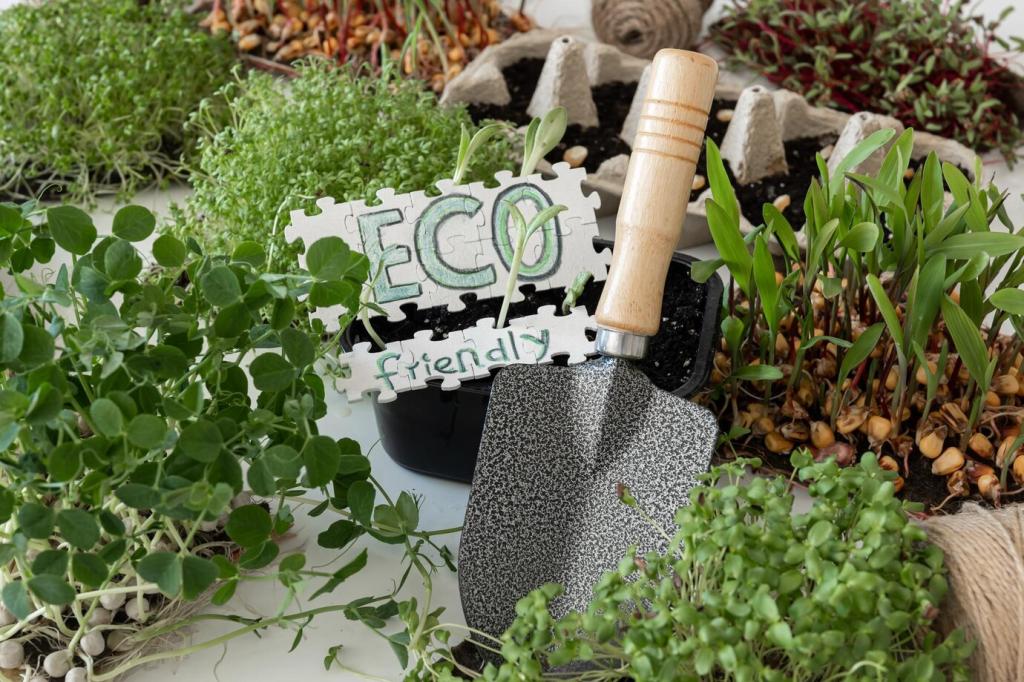
Rainwater Harvesting for Gardens: Turn Every Drop into Growth
Today’s theme: Rainwater Harvesting for Gardens. Welcome! Together we’ll discover how to capture clouds, nourish soil, and empower plants with soft, free rain. Stay with us, share your questions, and subscribe for practical tips, real stories, and seasonal guidance.
Why Rainwater Harvesting for Gardens Matters
Water scarcity, climate swings, and your backyard
When storms arrive all at once, much of that water is lost down storm drains. Capturing it at home reduces runoff, buffers against dry spells, and gives your garden a resilient supply precisely when plants crave moisture.
Healthier plants with softer, chlorine-free water
Rainwater carries fewer salts and no residual chlorine, which means roots absorb moisture more easily and soil microbes stay active. Many gardeners notice greener leaves, fewer tip burns, and sturdier blossoms after switching from tap watering to stored rain.
Savings that add up, from utility bills to stormwater fees
Every barrel of rain you use is a barrel you didn’t pay to pump, treat, or deliver. Over a season, reduced water bills—and sometimes lower stormwater fees—help your hobby fund new beds, tools, and pollinator-friendly plantings.
Know Your Catchment: Roof, Runoff, and Garden Needs
Multiply roof area by rainfall depth to gauge potential collection, then factor in losses from splash, first-flush, and minor leaks. Even a modest roof can fill multiple barrels during a typical storm, surprising new harvesters with generous yields.
Know Your Catchment: Roof, Runoff, and Garden Needs
Container gardens drink little but often, while deep beds prefer less frequent, longer soaks. Size your tank for one to two weeks of summer demand, and consider modular barrels that can expand as your garden ambitions grow.
Essential Components of a Garden Rainwater System
Well-pitched gutters prevent standing water and mosquito troubles, while leaf guards reduce debris that clogs screens. A smooth, continuous downspout path to your diverter ensures efficient flow, less maintenance, and cleaner storage water for delicate seedlings.


Essential Components of a Garden Rainwater System
The first millimeters of rain wash pollen, dust, and roof grit. A first-flush diverter captures that initial dirty water before directing cleaner flow to your tank, protecting pumps, drippers, and tender leaves from unnecessary sediment loads.
DIY Installation: A Weekend Build That Lasts Years
Place tanks slightly higher than garden beds to allow gravity-fed watering. Map overflow to permeable areas or rain gardens, and leave room to clean screens, tighten fittings, and connect hoses without gymnastics during midseason maintenance.


DIY Installation: A Weekend Build That Lasts Years
Measure twice, cut once, and keep the cut section clean. Insert the diverter level, seal joints with weatherproof gaskets, and test during a hose simulating rainfall. Adjust angles to prevent splashing and ensure smooth, quiet flow.



Care, Seasons, and Real Stories from Gardeners
Clear gutters before leaf fall, empty first-flush chambers after dusty seasons, and rinse screens when spring pollen spikes. A few fifteen-minute checkups prevent clogs, preserve flow, and keep water sweet for the first hot spell.
In cold regions, drain exposed lines, open valves, and leave room for ice expansion. In hot climates, shade tanks, use dark opaque walls to limit algae, and water at dawn to minimize evaporation while roots drink deeply.
Our neighbor doubled zucchini yields after swapping to rain-fed drip lines. A local school cut watering costs and grew a pollinator garden with student-built barrels. What will you try first? Share a photo, ask advice, and subscribe.
